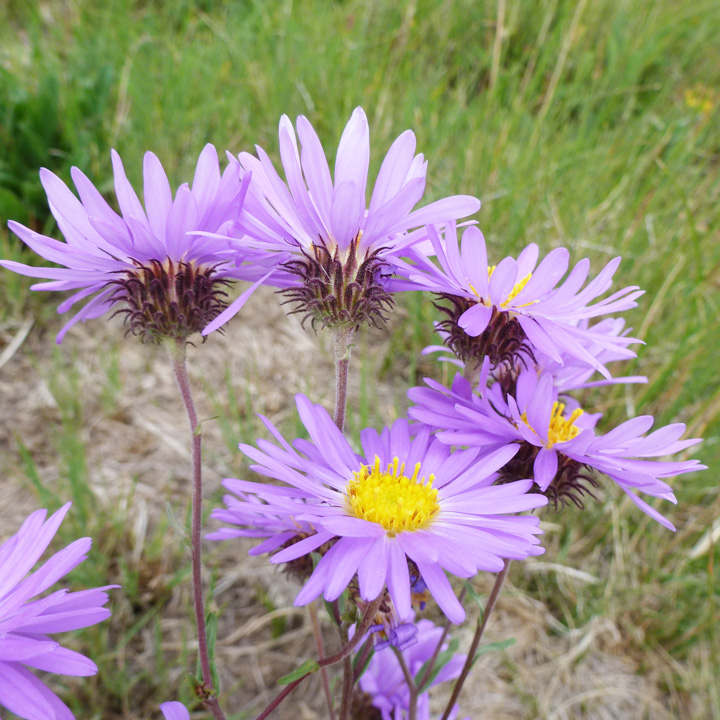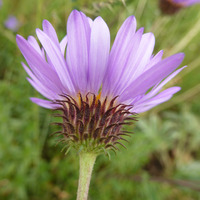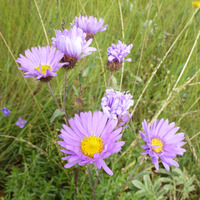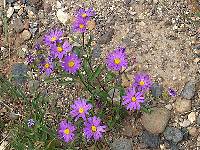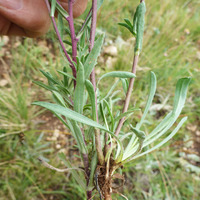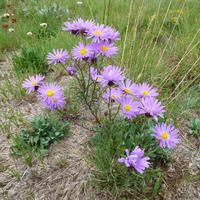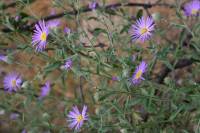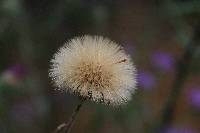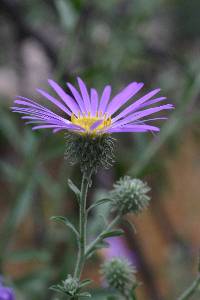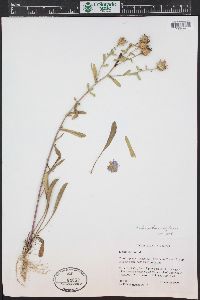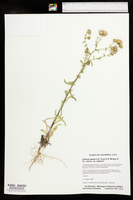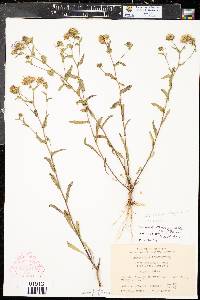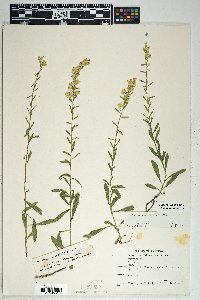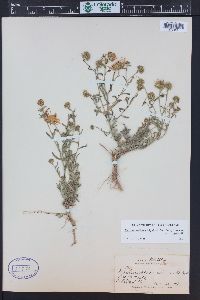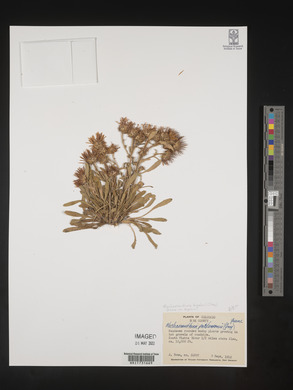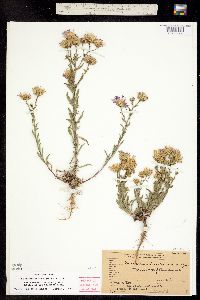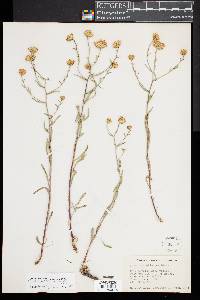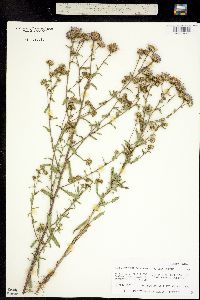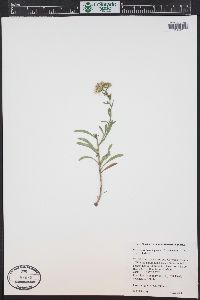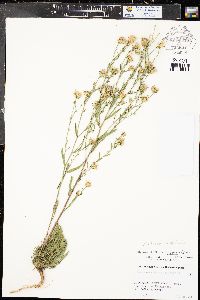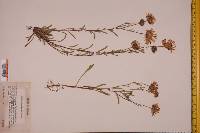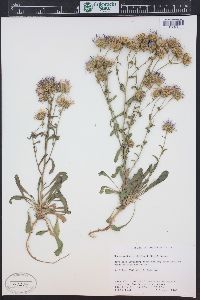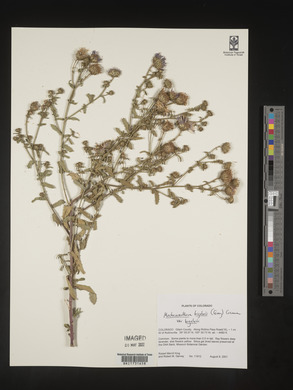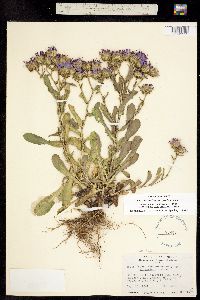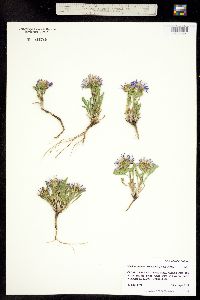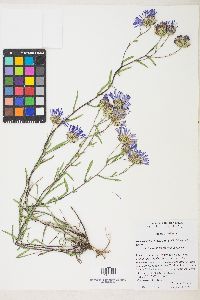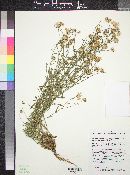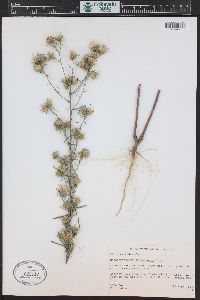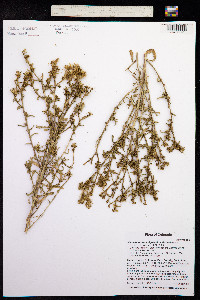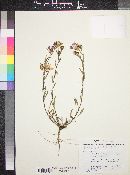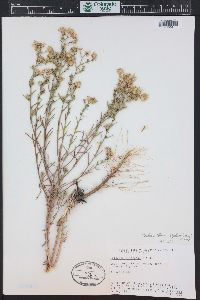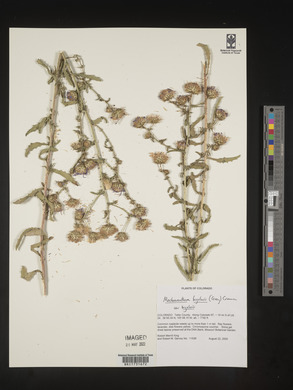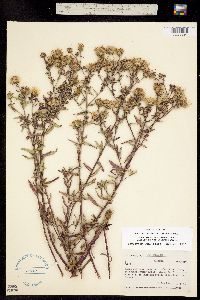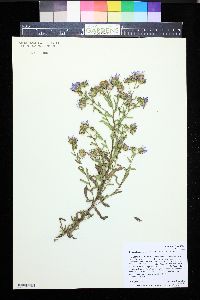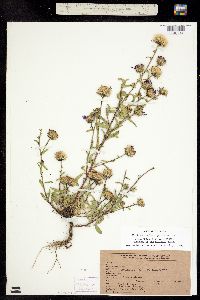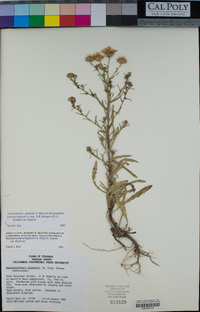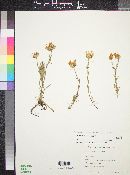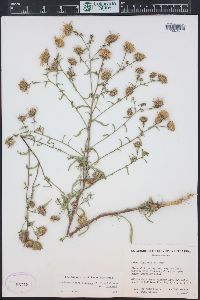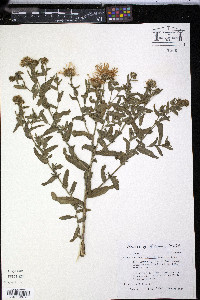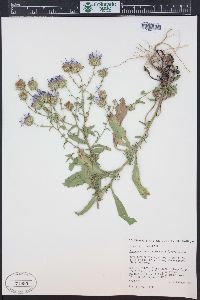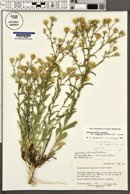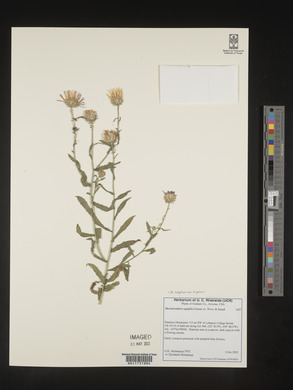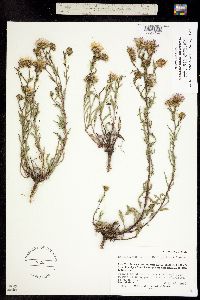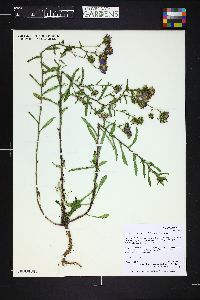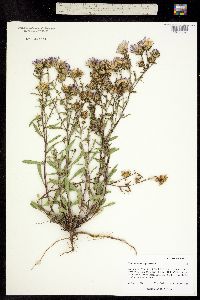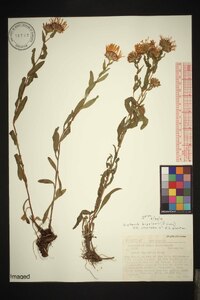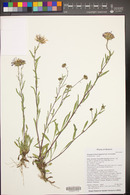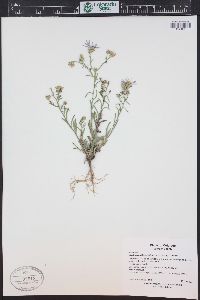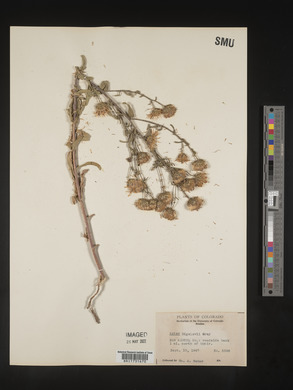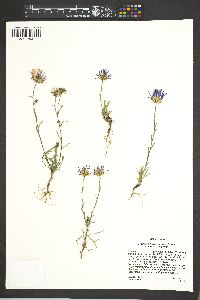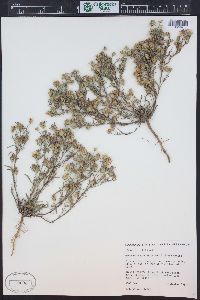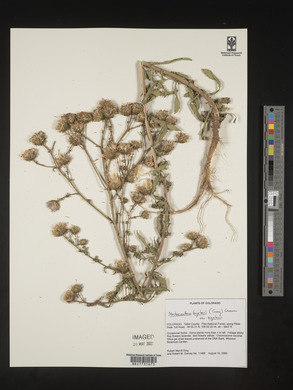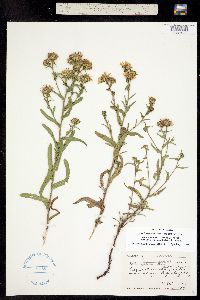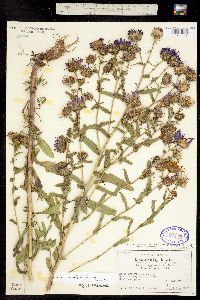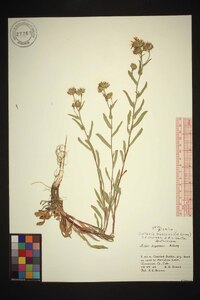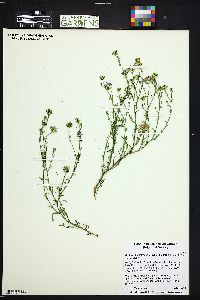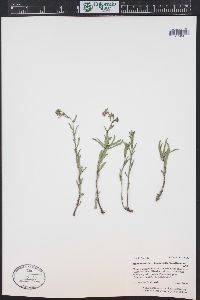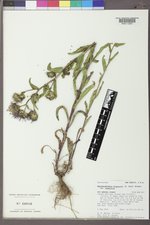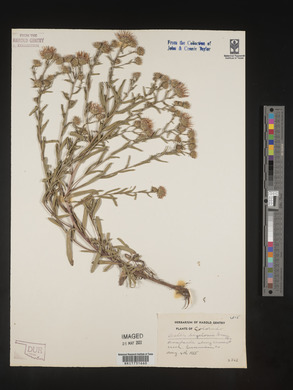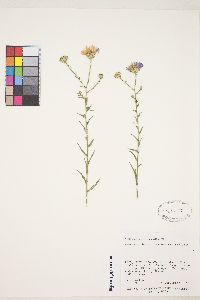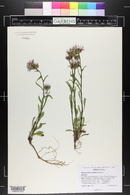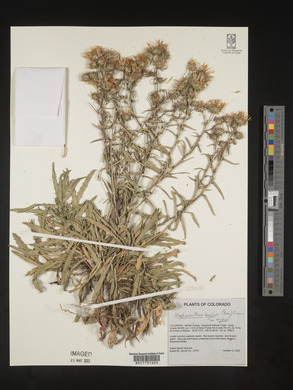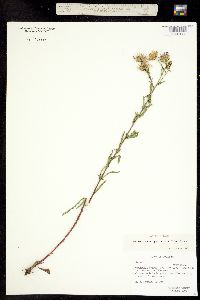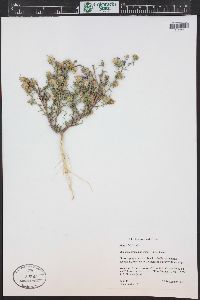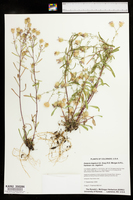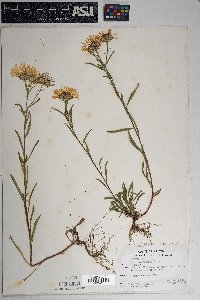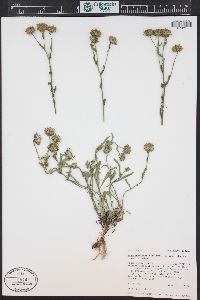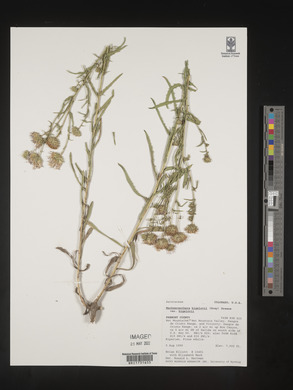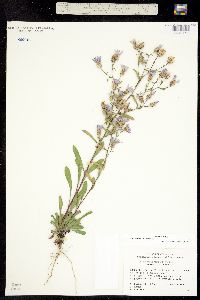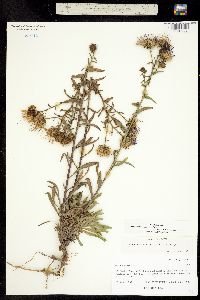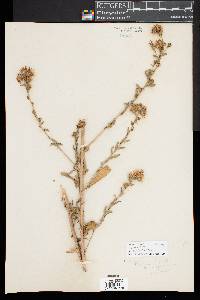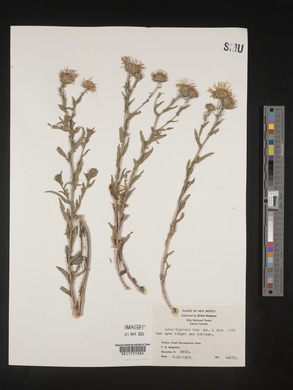Dieteria bigelovii
|
|
|
|
Family: Asteraceae
Bigelow's False Tansy-Aster, more...Bigelow's tansyaster, purple aster, Bigelow aster, Bigelow's machaeranthera, Bigelow's tansy-aster, Bigelow's tansyaster
[Aster bigelovii A.Gray in Torr., moreDieteria canescens var. incana (Lindl.) D.R.Morgan & R.L.Hartm., Machaeranthera bigelovii (A. Gray) Greene, Machaeranthera bigelovii bigelovii , Machaeranthera canescens var. alpina Porter, Machaeranthera canescens var. incana (Lindl.) A. Gray] |
Biennials or short-lived perennials. Stems, branches, and peduncles sometimes puberulent or canescent, stipitate-glandular. Leaf blades lanceolate to oblanceolate (linear to linear-oblanceolate in var. mucronata), mid 20-80 × (2-)5-15 mm, margins entire to irregularly dentate or serrate, faces glabrous or puberulent, often sparsely stipitate-glandular; distal bases usually cordate to auriculate, clasping. Involucres broadly turbinate to hemispheric. Phyllaries in 5-10 series, spreading to reflexed, apices long-acuminate, 2-6 mm, herbaceous (acute to acuminate, 1-3 mm in var. commixta), faces stipitate-glandular. Receptacles 4-9 mm diam. Ray florets pistillate, fertile; laminae blue to purple, 10-25 × 1-2 mm. Disc corollas 5-7(-8) mm. Cypselae sparsely appressed-hairy. Annuals, biennials, or short-lived perennials. Stems usually 1, stiffly erect, canescent, sometimes sparsely stipitate-glandular; branches widely divaricate, straight, stiff. Mid leaf blades linear-lanceolate to linear. Peduncles equaling or longer than involucres. Involucres broadly turbinate, 6-10(-12) mm. Phyllaries in 5-10 series, usually reflexed, apices usually canescent, stipitate-glandular. Ray florets pistillate, fertile. Cypselae sparsely to moderately appressed-hairy. Flowering Jun-Oct. Grasslands, sagebrush scrublands, usually in sandy or alluvial soils along streams; 300-1500 m; B.C.; Idaho, Oreg., Wash. FNA 2006, Wiggins 1964, Kearney and Peebles 1969, Allred and Ivey 2012, MacDougall 1973 Duration: Perennial Nativity: Native Lifeform: Forb/Herb General: Biennial to short-lived perennial herbs, 10-80 cm tall; stems erect, moderately branched; herbage sometimes puberulent or canescent, stipitate-glandular. Leaves: Alternate and sessile along the stems; blades linear to lanceolate or oblanceolate, 2-8 cm long, margins entire to irregularly dentate or serrate, faces glabrous or puberulent, often sparsely stipitate-glandular; upper leaves sometimes clasping the stems. Flowers: Flower heads showy, radiate, purple with yellow centers, at the tips of branchlets; involucres broadly turbinate to hemispheric, 7-15 mm high and one to three times as wide, the bracts (phyllaries) in 5-10 well-graduated series, the outer phyllaries much shorter than the inner; phyllary bases straw colored and firm (indurate) and phyllary tips herbaceous, green to red, long-acuminate, spreading to reflexed; phyllary outer surface often covered with gland-tipped hairs; rays 12-60 per flower head, the laminae (ray petals) 10-25 mm long, violet to purple; disc florets yellow. Fruits: Achenes 2-3 mm long, sparsely villous with fine, slightly appressed hairs; topped with a pappus of bristles. Ecology: Found on rocky slopes, in canyons, and along roadsides from 3,000-11,500 ft (914-3505 m); flowers March-October. Distribution: AZ, NM, CO, UT, and WY Notes: Look for this species under Aster bigelovii in older texts. There are several other synonyms as well, most notably Machaeranthera bigelovii. There have been a number of recent changes in what used to be the Aster genus, and species descriptions from different sources, even recent sources, are in conflict. This species description is roughly in line with the one in Flora of North America (2006), with edits based on which traits were actually visible and reliable on herbarium specimens at Northern Arizona University. There are 3 species in what is currently being called Dieteria: D. asteroides, D. canescens, and D. bigelovii. They are morphologically variable, challenging to distinguish from each other, and often intergrade so that differences described in the keys are not always helpful. D. canescens and D. asteroides are most similar to each other; distinguish D. bigelovii from both of those species by its usually somewhat larger flower heads, the largest on most individuals having involucres 2 cm or more in diameter (1.5 cm or a little less in D. asteroides and D. canescens); the leaves which tend to be narrower and have few, if any, shallow teeth or lobes; and the tips of the phyllaries, which are the longest-acuminate of the 3 species, distinctly reflexed so that the tips point downward, and often red or purple tinged. Ethnobotany: Unknown, but other species in the genus have many uses. Etymology: Dieteria comes from the Greek di, two, and etos, year, alluding to the biennial duration; bigelovii is named for Dr. John Milton Bigelow (1804-1878) who collected plants under the Whipple expedition. Synonyms: Machaeranthera bigelovii, Aster bigelovii Editor: SBuckley 2010, AHazelton 2017 |
|
|
|

